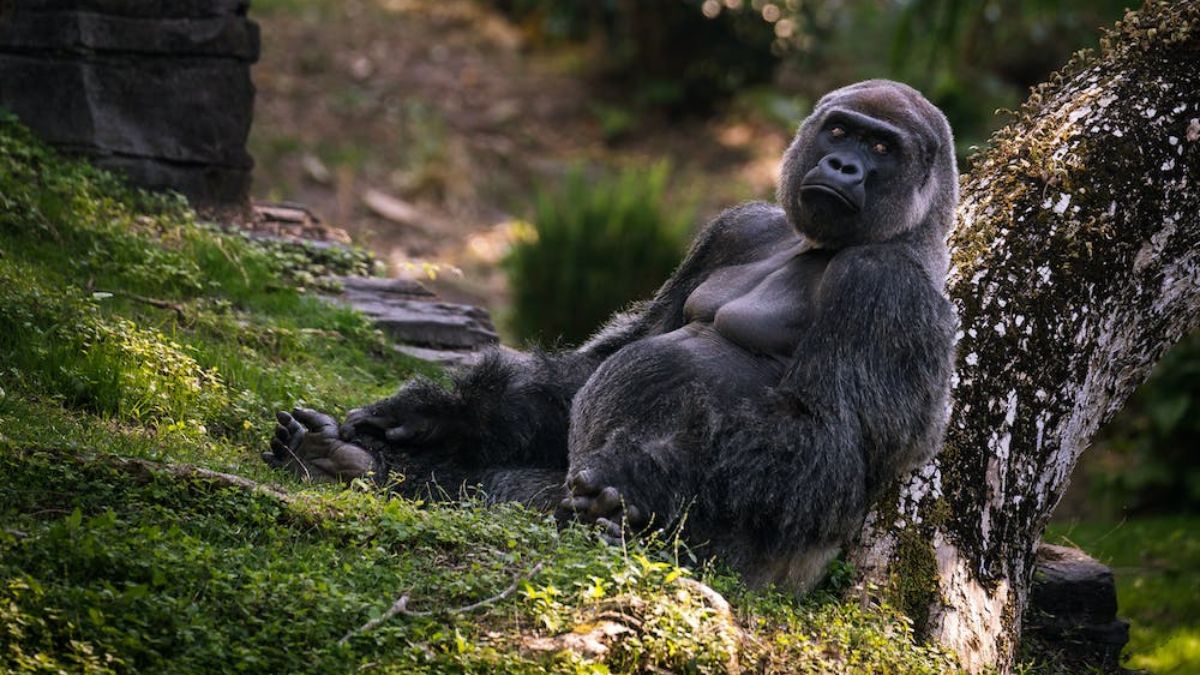Gorillas, the largest primates on Earth, are truly fascinating creatures. These gentle giants are not just known for their impressive size; they possess rich personalities and complex social structures. Here is a comprehensive exploration of fun facts about gorillas, delving into their physical characteristics, social behaviors, habitats, and their interactions with humans.
1. Species Diversity
Gorillas are classified into two primary species: the Eastern gorilla and the Western gorilla. Each species is further divided into subspecies. The Eastern gorilla includes the Mountain gorilla and the Eastern Lowland gorilla, while the Western gorilla comprises the Western Lowland gorilla and the Cross River gorilla. The Mountain gorilla, with its luxurious fur and penchant for cold, mountainous environments, is perhaps the most famous due to conservation efforts and tourism.
2. Physical Attributes
Adult male gorillas can reach up to 6 feet tall and weigh between 300 to 485 pounds. Their robust body structure is complemented by strong arms, capable of supporting their weight as they traverse their arboreal habitats. One striking feature is their elongated arms; gorillas possess an arm span that is significantly greater than their height, making them master climbers and excellent at foraging for food in trees.
3. Diet
Despite their formidable size, gorillas are primarily herbivorous. Their diet consists largely of leaves, stems, fruit, and flowers. They consume an astonishing amount of food daily—up to 60 pounds! This reflects their need for a high fiber diet to support their massive frames. Mountain gorillas, for instance, enjoy a variety of vegetation, including the fibrous stems of stinging nettles and other native plants.
4. Social Structure
Gorillas are highly social animals, living in groups known as troops. A typical troop is led by a dominant male known as the silverback, recognized by the distinctive patch of silver hair on his back. The silverback is responsible for the group’s safety, feeding routines, and social interactions. The members of the troop generally include adult females, their offspring, and occasionally younger males, called blackbacks, who may temporarily leave to join other groups.
5. Communication
Gorillas are communicative beings, employing a range of vocalizations, body language, and facial expressions to convey emotions and needs. Scientists have identified a repertoire of sounds including grunts, hoots, barks, and growls. For example, a low growl may signal displeasure or caution, while hoots can express contentment or a call for attention. Their facial expressions also play a critical role in non-verbal communication, demonstrating moods such as happiness, anger, or distress.
6. Lifespan and Maturation
In the wild, gorillas can live up to 35-40 years, while those in captivity may reach an impressive lifespan of over 50 years due to regular veterinary care and consistent feeding. Gorillas usually reach sexual maturity between 10 to 12 years of age, with females often giving birth every 4 years after a gestation period of approximately 8.5 months. Infant gorillas are typically dependent on their mothers for 3-4 years, during which they learn necessary survival skills.
7. Conservation Status
Gorillas face numerous threats such as habitat loss, poaching, and diseases, making them critically endangered. The destruction of their natural habitats due to logging, agriculture, and human encroachment greatly threatens their survival. Conservation efforts, including habitat protection, anti-poaching measures, and ecotourism initiatives, aim to protect these majestic animals. Organizations work tirelessly to ensure that their populations rebound and flourish in the wild.
8. Human Interaction
The relationship between gorillas and humans has evolved over the years. While they have been historically hunted and captured for entertainment, today’s approach is marked by a greater respect for these creatures. Gorilla watching tours offer a unique opportunity to observe them in their natural habitats without disrupting their lives, fostering an appreciation for their existence and increasing awareness of conservation issues.
9. Intelligence and Problem Solving
Gorillas exhibit remarkable cognitive abilities, demonstrating problem-solving skills and emotional depth. They are capable of using tools, such as sticks to extract termites from mounds or utilizing leaves for drinking. In various studies, gorillas have shown they can learn sign language, engaging in rudimentary communication with human caretakers. Famous individuals like Koko the gorilla have demonstrated understanding and expression that challenge our perceptions of animal intelligence.
10. Cultural Significance
Gorillas have a profound presence in the cultural imaginations of many societies. From literature to film, they often symbolize strength and gentleness. In some African traditions, gorillas are revered, embodying mystical qualities or representing clans. The awe-inspiring image of the silverback gorilla continues to permeate popular culture, reminding us of the importance of wildlife conservation.
In conclusion, gorillas are not merely large primates; they embody a wealth of culture, complexity, and character. Their projected intelligence, intricate social structures, and gentle demeanor provide a compelling narrative that elevates them as one of nature’s most captivating species. With ongoing conservation efforts and increased public awareness, we can hope to ensure the survival of these magnificent gentle giants for generations to come.









